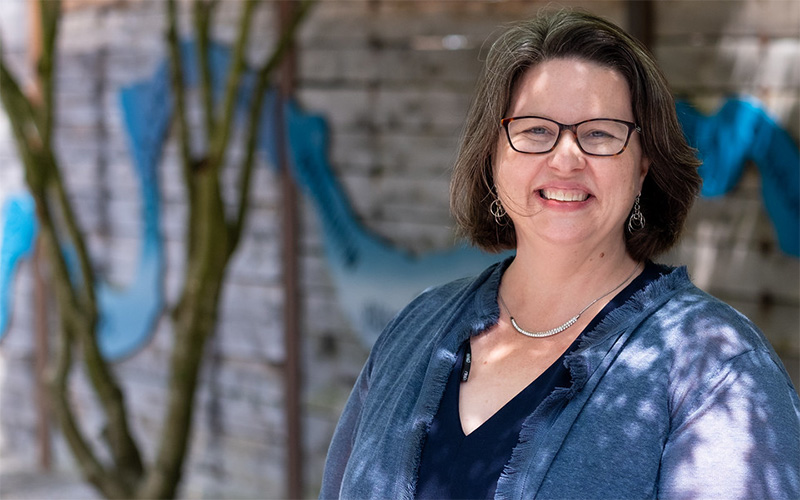
Going Places
The library can change a life. Just ask new UW Tacoma Library Director Annie Downey.
This Section's arrow_downward Theme Info Is:
- Background Image: ""
- Theme: "gold-light-theme"
- Header Style: "purple_dominant"
- Card Height Setting: "consistent_row_height"
- Section Parallax: ""
- Section Parallax Height: ""
An Abridged Version of Library History
Libraries have been around in one form or another for thousands of years. The first libraries in the United States were subscription-based, meaning you had to pay to belong to one. Members of these clubs tended to be white, male and wealthy.
The idea that libraries should be open to the public and should be funded by tax revenue didn’t take off until industrialist Andrew Carnegie donated money to build more than 2,500 public libraries around the world, including more than 1,600 in the United States.
The city of Richmond, Virginia, rejected Carnegie funding for fear that Black citizens would be allowed access. A handful of segregated Carnegie libraries were built, but they were often smaller and offered fewer services than their counterparts. A number of activists were arrested in the 1950s and 60s while attempting to use “whites-only” library facilities.
University libraries in the United States started out as places to house old texts. The active lending of books to faculty, staff and students came later. Access to books and services was once reserved for those with some kind of connection to an institution. The Supreme Court’s decision in Brown v. Board of Education as well as the Civil Rights Act opened the doors to academic libraries by opening the doors to colleges and universities to populations that were once denied entry.




